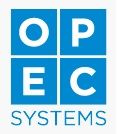3D Printed ACTIVAT3D Copper Proven to Kill SARS-Cov-2 Virus on Contact Surfaces
DARWIN, Australia, April 15, 2020 /PRNewswire/ -- Australian company SPEE3D has successfully developed and tested a fast and
affordable way to 3D print anti-microbial copper onto metal surfaces. Laboratory tests have shown that touch surfaces modified by this process 'contact kills' 96% of SARS-CoV-2, the virus that causes COVID-19, in just two hours.
The process, known as ACTIVAT3D copper, has been developed by modifying SPEE3D's world-leading 3D printing technology, using new algorithms for controlling their metal printers to allow existing metal parts to be coated with copper. Copper parts are difficult to produce using traditional methods and thus 3D printing may be the only tool available to rapidly deploy copper. SPEE3D technology makes it fast and affordable.
Australian NATA accredited clinical trial speciality laboratory, 360Biolabs, tested the effect of ACTIVAT3D copper on live SARS-CoV-2 in their Physical Containment 3 (PC3) laboratory. The results showed that 96% of the virus is killed in two hours and 99.2% of the virus killed in 5 hours, while stainless steel showed no reduction in the same time frame. Stainless steel is currently the material typically used in hygiene environments.
With laboratory testing complete, it is hoped the Australian-developed breakthrough can be applied to common touch items like door handles, rails and touch plates in hospitals, schools and other public places.
SPEE3D CEO, Byron Kennedy said the company has focused on developing a solution that can be rapidly deployed and is more efficient than printing solid copper parts from scratch. "The lab results show ACTIVAT3D copper surfaces behave much better than traditional stainless, which may offer a promising solution to a global problem. The technology can be used globally addressing local requirements, be they in hospitals, schools, on ships or shopping centres."
SPEE3D developed the unique technique to harness copper's proven abilities to eradicate bacteria, yeasts and viruses rapidly on contact by breaking down the cell wall and destroying the genome(1). This is compared to traditional surfaces like stainless steel and plastic, with recent studies showing that SARS-CoV-2 can survive on these materials for up to three days(2).
Stainless steel and plastic surfaces can be disinfected, however, the problem with these surfaces is that, even with rigorous protocols, it is impossible to clean them constantly. When surfaces become contaminated between cleans, touching them may contribute to superspreading events. Touching contaminated objects, known as fomite transmission, was suspected during the 2003 SARS-CoV-1 epidemic and analysis of a nosocomial SARS57 CoV-1 superspreading event concluded that touching contaminated objects (fomites) played a significant role(2).
To validate its abilities to combat COVID-19, copper samples printed by SPEE3D have been lab tested and shown to kill SARS-CoV-2. The SPEE3D team developed a process to coat a stainless-steel door touch plate and other handles in just 5 minutes. The digital print files were then sent to participating partners around the globe, allowing the simultaneous installation of newly-coated parts in buildings in the USA, Asia and Australia. In a matter of days, copper fixtures were installed in buildings at Charles Darwin University (CDU) in Darwin, Swinburne University in Melbourne, the University of Delaware in the USA and in Japan.
Assistant Director of Digital Design and Additive Manufacturing at the University of Delaware, Larry (LJ) Holmes, said "Scientists and engineers at the University of Delaware were honoured to be part of this global research collaboration. We recognized the importance of developing simple, yet highly impactful, solutions that have been proven effective on COVID-19. Recognizing supply chain shortfalls over the last couple of months, it was clear to this team that fabrication speed was a priority. Using this technology, we are able to rapidly transition safe options for high-touch surfaces."
SPEE3D has worked in close collaboration with the Advanced Manufacturing Alliance (AMA) at CDU. The initial testing of ACTIVAT3D copper and future studies have been funded and supported by the National Energy Resources Australia (NERA). NERA CEO Miranda Taylor said SPEE3D's ability to successfully adapt their technology and pivot their business model demonstrated the resilience of Australian businesses and their potential to help the world combat COVID-19. "NERA has supported SPEE3D to develop market-leading technologies to help our national energy sector, and we're committed to assisting them leverage their skills and expertise into this important new paradigm to help our country and many others curtail the devastating impact of this global pandemic."
For more information on ACTIVAT3D copper, visit www.spee3d.com .
About SPEE3D
SPEE3D, based in Darwin and Melbourne, Australia, is an innovative supplier of metal-based additive manufacturing technology. SPEE3D developed a metal 3D printer able to rapidly manufacture components in a variety of different metals and alloys including copper. SPEE3D printers leverage a process called cold spray, which involves accelerating powder particles within a supersonic air jet. The particles deform and bond onto a surface, building up a coating, and eventually, a 3D object. The company has recently announced government-funded trials with the Royal Australian Navy and Australian Army.
Note for Editors:
This press release, along with images and videos can be found in the Resources - Press Kit section(https://www.spee3d.com/resources/?resource=press-kit) of the SPEE3D website or dropbox.(https://www.dropbox.com/sh/8qtschhqgo77s1k/AAB0kSauUfVTVTbkBpgf8V6Sa?dl=0)
1. Warnes, S.L., Little, Z.R. and Keevil, C.W., 2015. Human coronavirus 229E remains infectious on common touch surface materials. MBio, 6(6), pp.e01697-15.
2. Van Doremalen, N., Bushmaker, T., Morris, D., Holbrook, M., Gamble, A., Williamson, B., Tamin, A., Harcourt, J., Thornburg, N., Gerber, S. and Lloyd-Smith, J., 2020. Aerosol and surface stability of HCoV-19 (SARS-CoV-2) compared to SARS-CoV-1. medRxiv.
View original content:http://www.prnewswire.com/news-releases/3d-printed-activat3d-copper-proven-to-kill-sars-cov-2-virus-on-contact-surfaces-301040163.html
SOURCE SPEE3D





